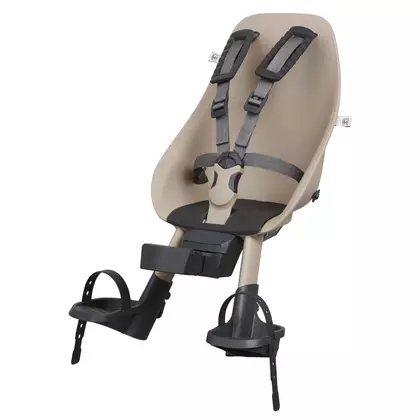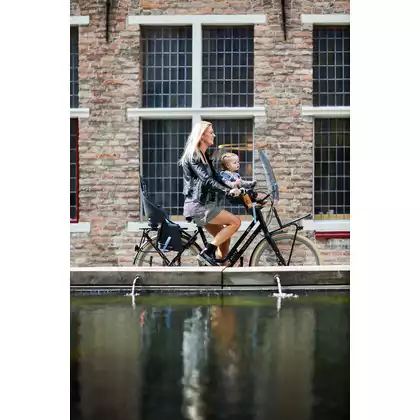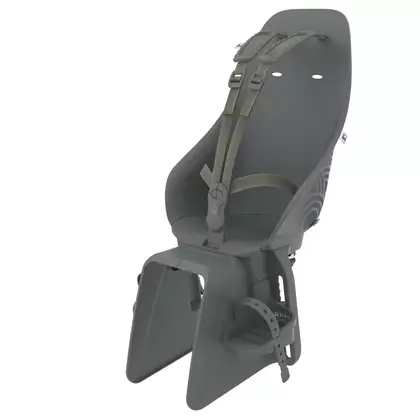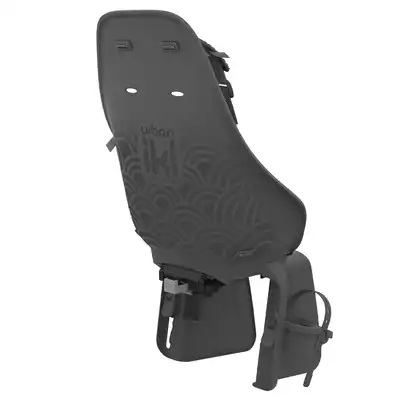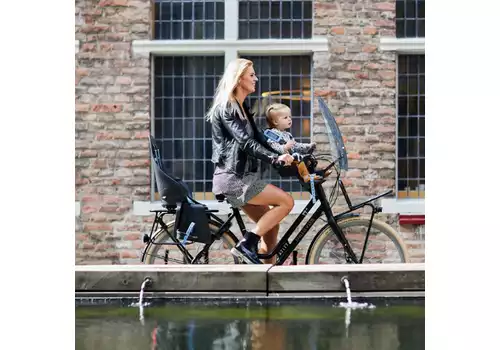
Bicycle seats, or how to safely transport our child on a bicycle
Nowadays, it is becoming more and more fashionable to travel on one bike with your child.
This is good for our health, well-being and the environment. On the market, we have access to the purchase of various types of child seats, starting with those mounted on the frame and ending with seats placed in the trunk. The second type is one of the most frequently chosen due to the possibility of greater lifting capacity and ease of assembly. When choosing a seat mounted to the frame, we must choose the right size that will be stable and will not tilt while driving. It should be taken into account that the possible slipping of the child from the seat or the shifting of the structure itself should not take place. While driving, we need to focus our attention on the road and driving the vehicle, which is why the purchase of a properly profiled model is very important and often requires appropriate thought time.
Can you transport a child on a bicycle?
A child does not have to be the reason why we change our ecological lifestyle by switching to a car. Physical activity is very important, and transporting a child to kindergarten or nursery on a bicycle will have a better impact on its development. The toddler then observes nature, the environment and spends more time with the parent in closer contact. However, it should be remembered that the child should have a properly fitted seat that will allow safe and comfortable transport of the toddler. Let's look at the comfort of the child, but also ours. You cannot transport a child on your lap or on the handlebar while riding a bicycle, because it is a life hazard for the child as well as for other cyclists and pedestrians. We must be aware that when transporting a child in a two-wheeled vehicle, we include it in road traffic. This means that we are responsible for it and it is up to us whether the journey will be safe. It is therefore worth choosing routes that have bicycle paths, and avoid narrow, unlit roads if possible.
How to safely ride a bike with a child?
Safe riding with a child on a bicycle is comparable to safe riding in a car. In both cases, the child sits in a car seat that must be appropriate to the age and height of the toddler. Before starting to ride a bicycle, we must comfortably seat the child in the seat and fasten it with belts. Any belt that has been fitted to the car seat model should be used. An important point that is often overlooked is fastening the belts on the shoes. In a hurry, we often forget about it, which can have a dangerous end result. During the ride, the toddler gets bored and his legs start to hang down. Very often this ends up with scratching of the legs, and in the worst case, the leg gets stuck in the spokes of the bicycle. Most of the seats have leg locks and height adjustment. An important element is also the stabilization of the head. A child who travels for a long time may become sleepy and head droop from fatigue. In addition, any turbulence that arises while driving should not affect the position of the child's head. Properly matched head protection will be the right solution. An additional aspect used in bicycle seats are reflectors. We often travel by bicycle late at night, in places where there are no bicycle paths. The car driver should be able to see from a distance that a bicycle is moving, and most importantly, a vehicle with two people. Reflectors guarantee the avoidance of accidents and dangerous road situations.
How to transport a 4-year-old child on a bicycle?
Bicycle seats can be installed both in the front and in the back of the vehicle. Children over 4 years of age should be transported in child seats placed in the back. Such a child is larger, which occupies a large field of vision for an adult. In addition, the weight can make it difficult to change direction. Children over 4 years of age also do not need constant visual attention, so they can be transported in the back. This does not change the fact that the seat should be properly selected, and the child should be properly fastened, and his legs and head should be secured. Most models for older children do not have additional head protection. In this case, we recommend buying an additional helmet for the head, for a greater guarantee of safety while driving. The number of models available on the market should not cause any problems with choosing the right model. Seats for older children should also be equipped with reflectors, which will work especially at night. If we have doubts about the quality and safety, it is worth checking whether the seat has the European Quality Certificate EN14344. Products containing such markings have safe materials for use (they do not contain harmful substances that are hazardous to health) and a guarantee of the safety of the design of the seat itself. This means that before releasing the product for sale, the car seat has undergone many tests. This certificate applies to any type of car seat, regardless of whether it is intended for transport in the front or rear of the vehicle.
Urban IKI - bike rack seat for junior
Which bike seat for a one-year-old child?
A one-year-old child can be transported in a bicycle seat, provided that it is able to sit unaided and has no major difficulties. Many paediatricians believe that it is most appropriate to transport a child only after turning 1.5 years old, when we have a guarantee of his independence in the seat. However, it has been known for a long time that every child develops differently and it is up to the parent to make the final decision. The bicycle seat should be properly selected depending on the age of the child. When buying, remember that children think differently than adults and are often not aware of certain dangers that can happen while driving. The main principle is the stability of the limbs. Stabilizers on both sides of the head, adjustable footrests with a lock and all belts fastened are the basics before setting off on a journey. None of the elements should be omitted. There should be no rush to place your child in the car seat. It must be safe while traveling. It is also important to place the car seat in the front. The child then has close contact with the parent, and the guardian has constant insight into what is happening to his child while driving. Not all car seats are suitable for front-facing, so we must pay special attention to this when purchasing. There should be no major difficulties with the choice, and many models can be found on our website.
At what age can a child be transported on a bicycle?
It is estimated that children up to 7 years of age can be transported on a bicycle. When deciding to transport a child in a bicycle seat, we should take into account its size and weight. A bike that is ridden by one person will carry a lot of weight with older children and it is often better to buy a second bike. However, this is not necessary if the child's weight does not interfere with driving. With older and heavier children, when driving a vehicle, possibly longer travel time should be taken into account due to the overall load. In addition, when changing direction, you should be more vigilant and definitely not do it at a higher speed, because a child placed in the back can definitely load the bike to one side, which will cause the vehicle to tip over. When driving a bicycle with an older child on it, do not place the seat in the front, as this will make transport completely impossible. Such transport is dangerous for both pedestrians and other cyclists due to the limited field of view.
Does a child in a bicycle seat need to wear a helmet?
A helmet on the head while riding a bicycle is always a field for big discussions. Why? According to many people, it is usually an additional investment that is not needed. Children transported in car seats are not required to wear a helmet. Let's consider, however, whether it is not worth putting it on as an investment in health and even life. In the event of a possible fall of the vehicle, the child is attached to the structure flying to the ground. He hits it together with the ground, which is a great danger. In addition, while riding, a collision with another cyclist may happen, who may also drive directly into the child sitting in the seat. Safety both on the road and on the bike path is extremely important, and the purchase of a helmet is an increase in the safety standard while traveling. In addition, when buying a child's first helmet, we teach him the basic rules of safe road traffic, which may one day have a significant impact in his adult life. When deciding to buy a helmet, the child should be present with us. Each model has a different size, so it is worth checking, despite frequent adjustments, whether it will not fall off your head and will cushion a possible accident.
What instead of a bicycle seat?
An alternative to bicycle seats are recently popular bicycle trailers. They allow you to comfortably transport a child who can play in the trailer or go to sleep during the journey. The bicycle trailer can be mounted on both traditional and high-performance bicycles. This choice is best for the youngest children due to travel safety. In addition, it protects the child from possible weather changes such as snow or rain. Currently, there are many models available in the market in different colors. They usually have three durable wheels that guarantee safe travel and absorb shocks while driving. Most of them have built-in meshes, through which the child can observe what is happening around, and the parent can see how the toddler is doing during the stop. However, remember not to put food or drink in the trailer. While driving, the child could choke or choke, and the parent who is driving the vehicle will not be aware of it. Also, do not put many toys in the trailer, especially those that contain sharp edges.
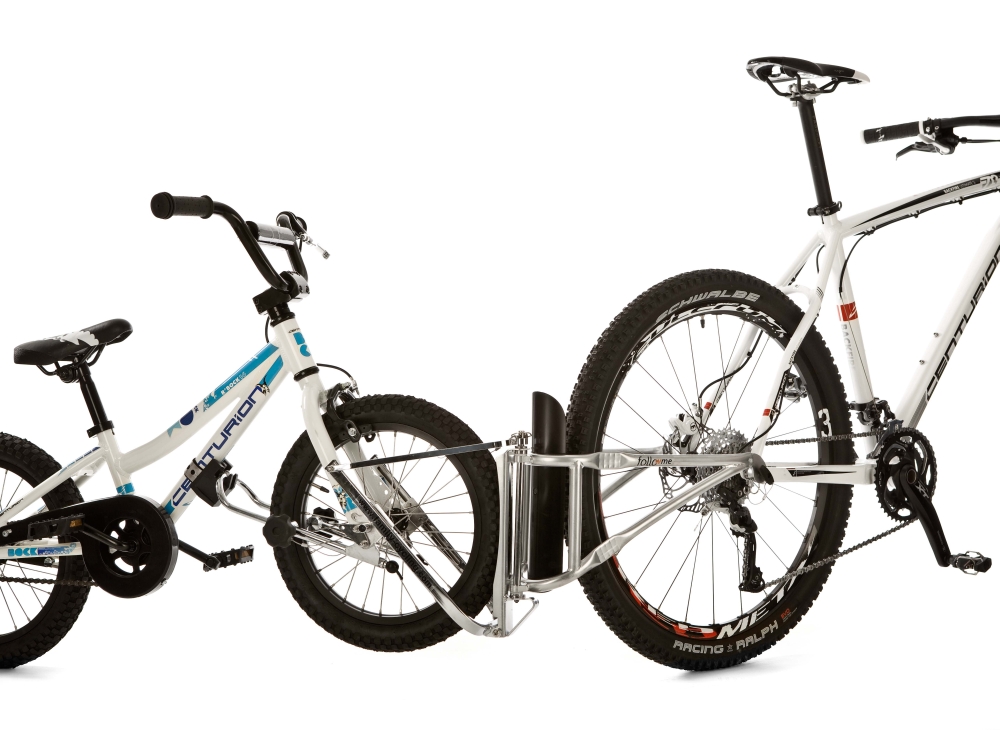
.png?1677767993)


